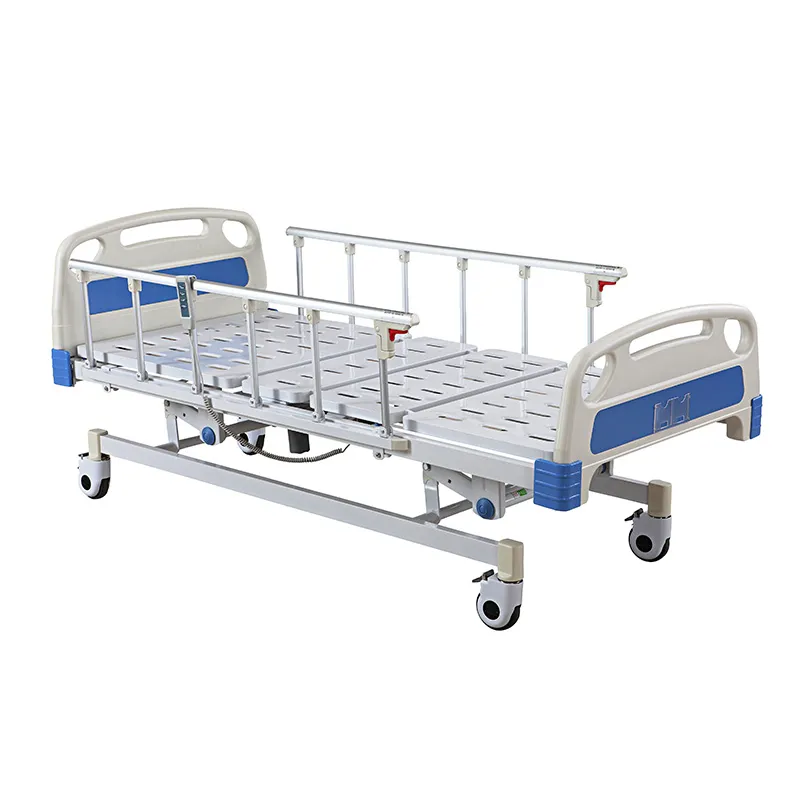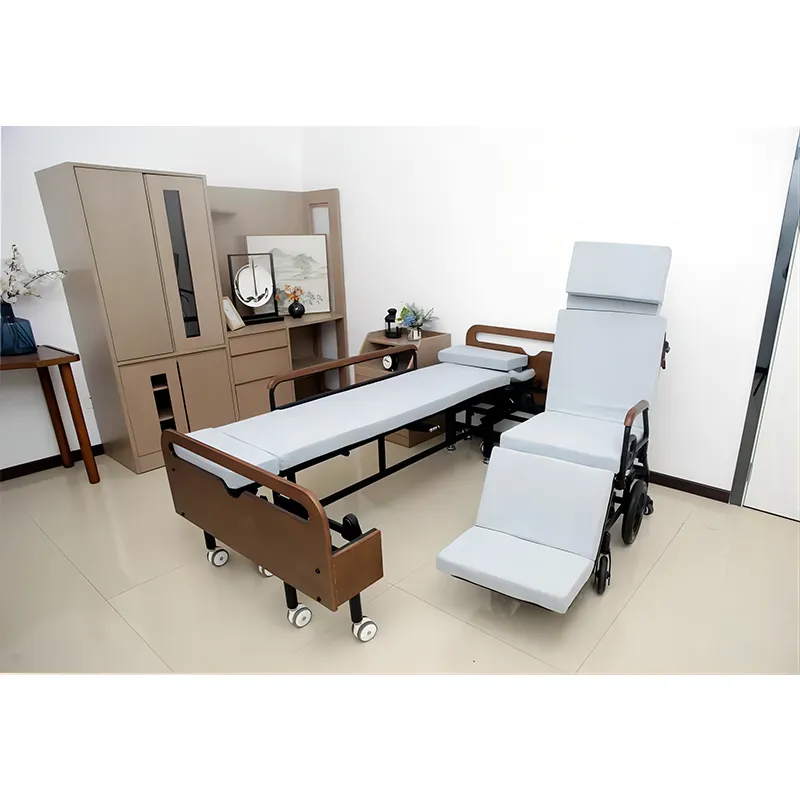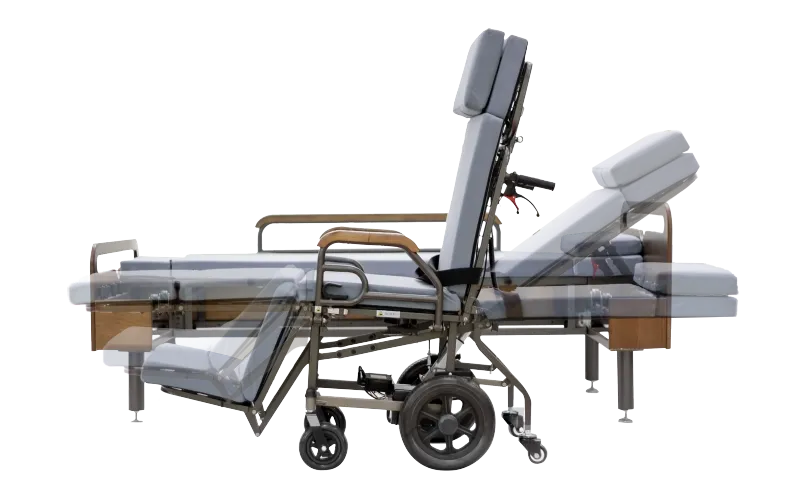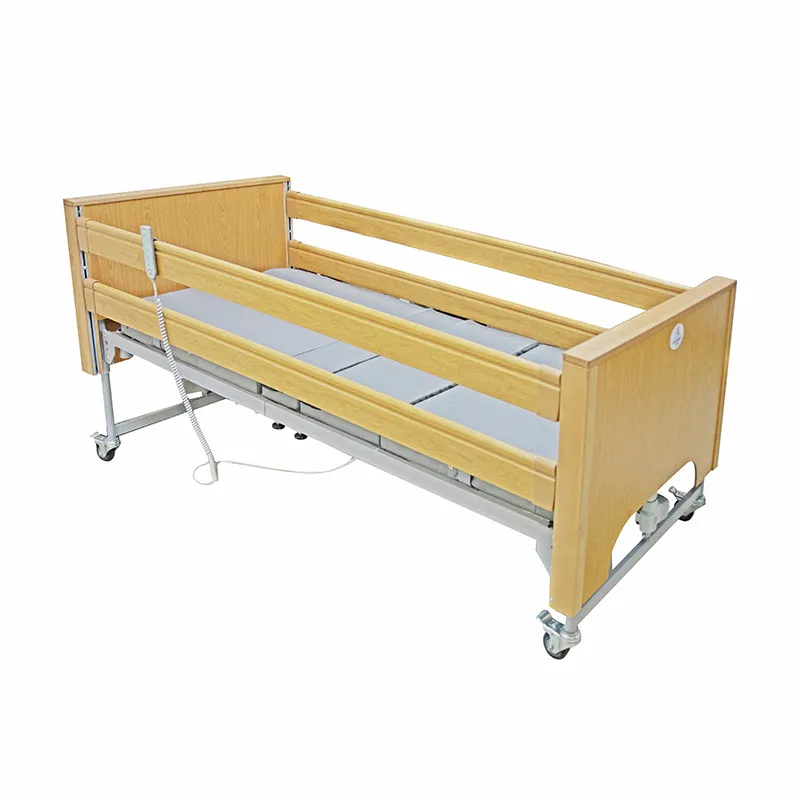
Can Hospital Beds Be Disassembled?
2024-11-15 15:30

Hospital beds, a common medical equipment, play a vital role in hospitals, nursing homes and even many families. However, over time or due to relocation, storage and other reasons, disassembling hospital beds may become a necessary task. So, can hospital beds be disassembled? If so, why should they be disassembled? What should be paid attention to during the disassembly process?
This news will answer these questions for you and provide detailed disassembly instructions.
Can hospital beds be disassembled?
In short, yes, hospital beds can be disassembled. Most modern hospital beds are designed not only for functionality and comfort, but also for ease of disassembly and transportation. Whether it is a hospital bed for hospital use or a nursing bed for home use, they can usually be disassembled into several parts for easy transportation, storage or maintenance.
In terms of design, the disassembly function of hospital beds is usually reflected in the following aspects:
● Modular design: Many hospital beds adopt modular design, which means that the various parts of hospital beds can be disassembled and reassembled relatively independently. Common removable parts include the head and foot of the bed, the mattress support frame, and casters.
● Tool-assisted disassembly: Although some simple hospital beds may only require manual disassembly, more hospital beds are designed for safety and stability and usually require specific tools for disassembly and assembly.
● Easy to carry: The disassembled hospital beds are smaller and easier to carry through narrow door frames, stairs or corridors. This makes the movement of hospital beds more convenient, especially in home care environments.
Why disassemble hospital beds?
When relocation is required, hospital beds usually need to be disassembled for easy transportation. Especially for those hospital beds with complex structures and large volumes, disassembly can make the transportation process smoother and avoid scratches or damage in narrow spaces. In addition, if the hospital beds are not needed temporarily, disassembling and storing them is also an effective way to save space.
As a frequently used equipment, the various parts of hospital beds are inevitably subject to wear or failure. Disassembly of hospital beds is often necessary for repair or replacement of parts. By disassembling hospital beds, technicians can more easily inspect the various parts of hospital beds and identify and resolve potential problems in a timely manner.
During the care process, mattresses or other accessories may need to be replaced periodically. Disassembling hospital beds makes it easier for caregivers to perform these operations while also ensuring the comfort and hygiene of patients. When hospital beds are no longer needed, disassembly makes them easier to handle, transport or donate to institutions or individuals in need. By disassembling hospital beds, they can be effectively broken down into easily manageable parts, which reduces transportation costs and difficulties.

What tools do I need to disassemble and remove hospital beds?
The tools required to disassemble hospital beds depend on the design and construction of the hospital beds. Although some hospital beds can be disassembled with simple manual operations, most modern hospital beds still require the use of some basic tools. Before disassembling a hospital bed, you should carefully read the manual and all instructions included with the hospital bed. Once you have a good understanding of the bed, assemble your tools; these include:
● Screwdriver
● Wrench and socket wrench
● Pliers
● Power tools
● Rubber mallet
● Storage box or bag
Screwdriver - A screwdriver is one of the most essential tools for disassembling hospital beds. Many hospital beds have components that are fixed with screws, which can be easily removed using a screwdriver. During the disassembly process, it is recommended to prepare a variety of screwdriver sizes and types to cope with different types of screws.
Wrench and socket wrench - Some hospital beds have joints that are fixed with nuts and bolts, which require the use of a wrench or socket wrench to disassemble. Socket wrenches are particularly useful for areas that are difficult to access or require a large torque.
Pliers - Pliers are also very useful when disassembling hospital beds, especially for handling some tight nuts or parts that require extra torque. In addition, pliers can be used to fix or hold parts to prevent them from accidentally loosening during the disassembly process.
Power tools - For some more complex hospital beds, the use of power tools can greatly improve the efficiency of disassembly. For example, electric screwdrivers and electric wrenches can disassemble multiple parts more quickly, reducing the time and fatigue of manual operation.
Rubber hammer - Rubber hammer is used to knock some hard-to-loose parts during disassembly, or to gently tap fixed parts without damaging the material during reassembly. It is a more gentle and effective tool than an ordinary hammer.
Storage box or bag - When disassembling hospital beds, there may be many small parts, such as screws, nuts, etc. Using storage boxes or bags to collect these small parts can prevent them from being lost and are easier to find when reassembling.

What are the steps for safely disassembling hospital beds?
Safely disassembling hospital beds requires a series of steps to ensure that the whole process goes smoothly and avoids harm to equipment or personnel during the disassembly process. The following are common steps for disassembling hospital beds:
Step 1: Preparation
Before you start disassembling hospital beds, you first need to prepare the required tools and clear enough working space. Make sure there are no obstacles around the hospital beds and keep the environment clean during the disassembly process. It is also recommended to wear appropriate protective equipment, such as gloves and goggles, to prevent accidental injuries.
Step 2: Disconnect the power supply
If the hospital beds are electric, always make sure that the power supply is disconnected before starting to disassemble them. This is a key safety step to prevent the risk of electric shock or accidental start-up during the disassembly process.
Step 3: Disassemble the accessories
Before disassembling the main structure of the hospital beds, you first need to remove all accessories and accessories. This may include mattresses, guardrails, handrails, etc. For removable parts, use the appropriate tools to carefully remove them and store them properly.
Step 4: Disassemble the head and foot of the bed
The head and foot of the bed are usually important parts of the hospital beds structure, but they are also usually removable. When removing the head and foot of the bed, you may need to use a screwdriver, wrench or other tool to loosen the screws or bolts that fix them.
Step 5: Disassemble the bed frame
Next, you need to disassemble the bed frame of the hospital beds. This is usually the most complex part, as the bed frame comprises the main structure of the hospital bed. Carefully loosen the connecting parts of the bed frame and gradually break it down into smaller parts. Be careful to maintain balance during this process to avoid parts suddenly coming loose or collapsing.
Step 6: Dismantle the castors and other bottom parts
Finally, the castors and other bottom parts of the hospital bed can be dismantled. The castors are usually fixed with screws or clips, and you will need the corresponding tools to dismantle them. Remember that the castors are an important part of the support of the hospital bed, so be extra careful when dismantling them.
Step 7: Check and store the parts
After completing all the dismantling steps, check all the removed parts to make sure nothing is missing or damaged. Put all small parts in storage boxes or bags, and store larger parts in a safe place for reassembly.

What should I do after dismantling the hospital bed?
After dismantling the hospital bed, you have several options to proceed, depending on the specific situation.
If the hospital bed is still needed in the future, storing it in a dry, well-ventilated place is the best option. Make sure all parts are stored properly to prevent damage or loss. If there are instructions, it is recommended to store them with the parts so that they can be referred to when reassembling.
If the hospital bed is no longer needed but is still in good condition, you can consider donating it to an organization or individual in need. Many charities, nursing homes or home care agencies accept hospital beds as donations. Disassembled hospital beds are easier to transport and handle, making the donation process more convenient.
For some high-quality hospital beds, if they are no longer needed, they can be sold on the second-hand market. Ensuring that all parts are complete and in good condition can increase the market value of hospital beds. When selling, providing detailed disassembly and assembly instructions can also help buyers make better use of hospital beds.
If the hospital bed is no longer usable or is no longer suitable for continued use, you can contact a professional scrap recycling company for disposal. Disassembled hospital beds are easier to sort and recycle, helping to reduce the impact on the environment.
What if I need help disassembling hospital beds?
Although dismantling hospital beds is not a difficult task, for some complex hospital beds structures, or if you lack experience, it may be a better choice to ask for help. Many medical equipment suppliers and repair companies offer hospital beds dismantling services. They have professional tools and experience to complete the dismantling and moving of hospital beds safely and efficiently. If the hospital beds are complex structures or you feel uneasy about the dismantling process, it is a good choice to seek professional help.
If you have a caregiver in your home, they may already be familiar with the operation and maintenance of hospital beds. Asking them if they can assist in dismantling the hospital beds may help you save time and energy. For some simple hospital beds, the help of friends or family may be enough. Especially if the hospital beds are large or heavy, an extra person to help can make the dismantling process smoother.
How long does it take to dismantle a hospital bed?
The time required to dismantle a hospital bed varies depending on the type of hospital beds, their structure, and your level of experience. For some simple hospital beds, the entire disassembly process may only take 30 minutes to 1 hour. For those hospital beds with complex structures and many parts, the disassembly time may extend to 2 hours or more.
Factors that affect the disassembly time include:
● Type and structure of hospital beds: Electric hospital beds are usually more complex than manual hospital beds, and the disassembly time will be correspondingly longer.
● Your experience: People who have experience in disassembling hospital beds can usually complete the task faster.
● Preparation of tools: If the tools are well prepared and suitable for the hospital beds structure, the disassembly time will be significantly shortened.
● Condition of components: Rusty or damaged screws and fasteners may increase the difficulty and time of disassembly.

Which hospital beds require extra care when disassembling?
During the disassembly process, some hospital beds require extra care due to their special design or function. The following types of hospital beds should be paid special attention to when disassembling:
Electric hospital beds
Electric hospital beds are usually equipped with electric motors and complex wiring connection systems. When disassembling, always disconnect the power supply and handle the wires carefully to avoid electric shock or damage to the electric system. In addition, electric hospital beds are usually heavy, so special attention should be paid to the handling and support of the components when disassembling.
Elderly care beds
Elderly care beds are usually designed to be easy for caregivers to operate, but they may also contain complex lifting mechanisms or auxiliary equipment. When disassembling, special care should be taken to avoid damaging the equipment or causing accidental injuries during the disassembly process.
Intensive care beds
Intensive care beds are usually equipped with more safety features and complex structures to ensure the safety of patients. When disassembling such hospital beds, special attention should be paid to maintaining the integrity of the components so that they can still function effectively when reassembled.
Children's hospital beds
Children's hospital beds are usually more sophisticated in design and contain more safety and comfort features. When disassembling, special care should be taken to avoid small parts being lost or damaged.








